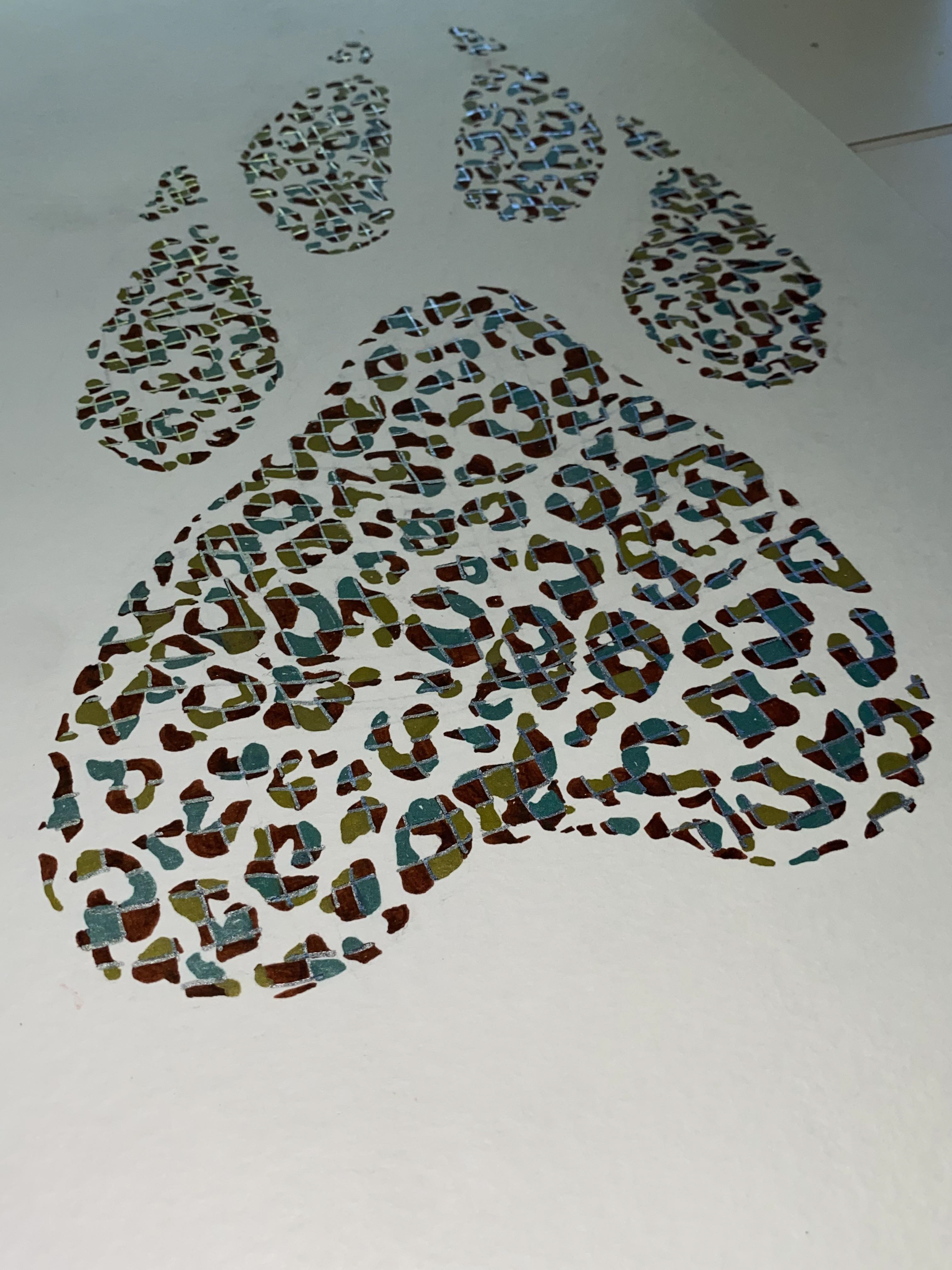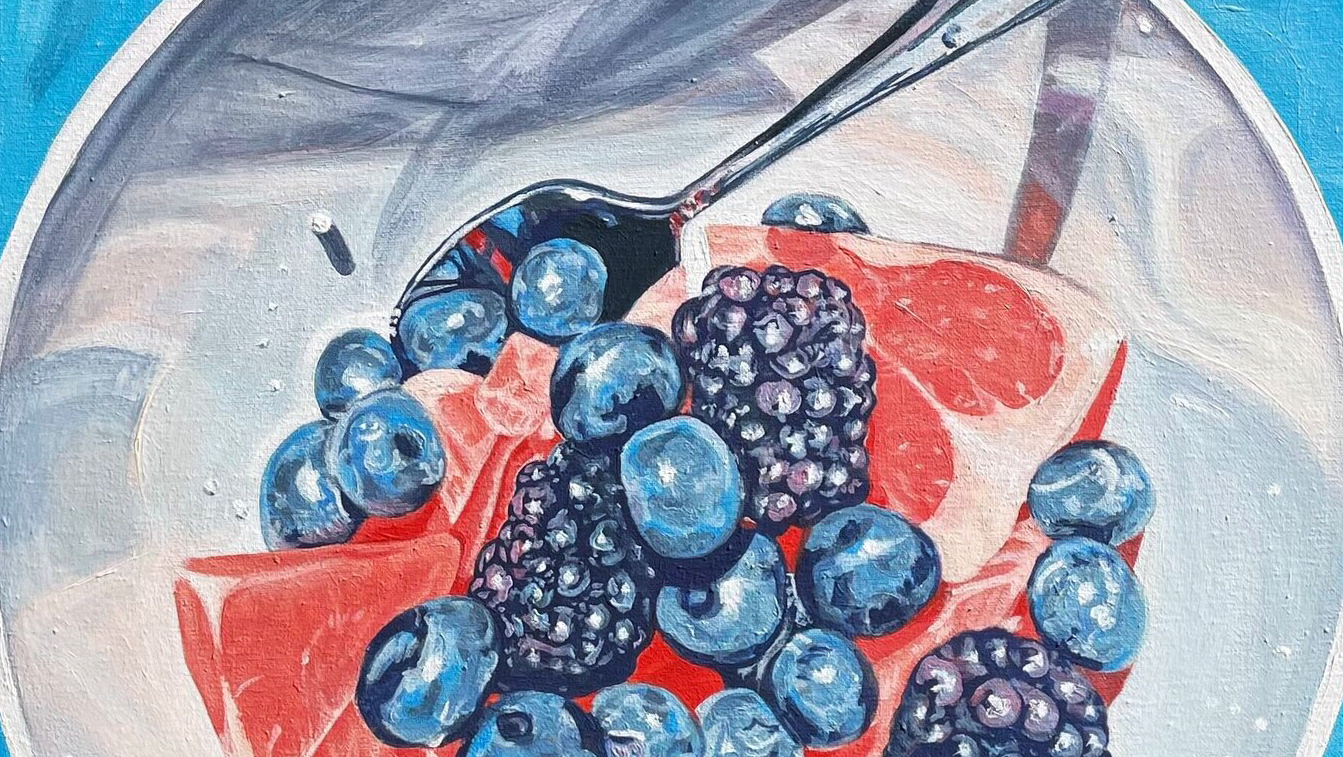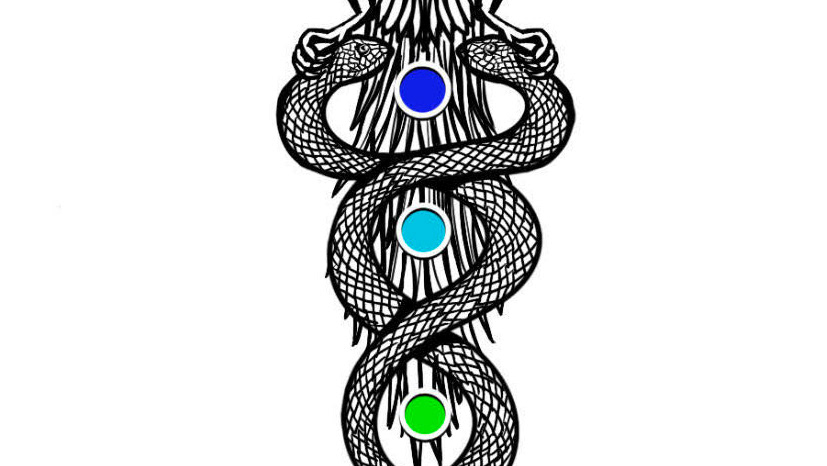
Feather
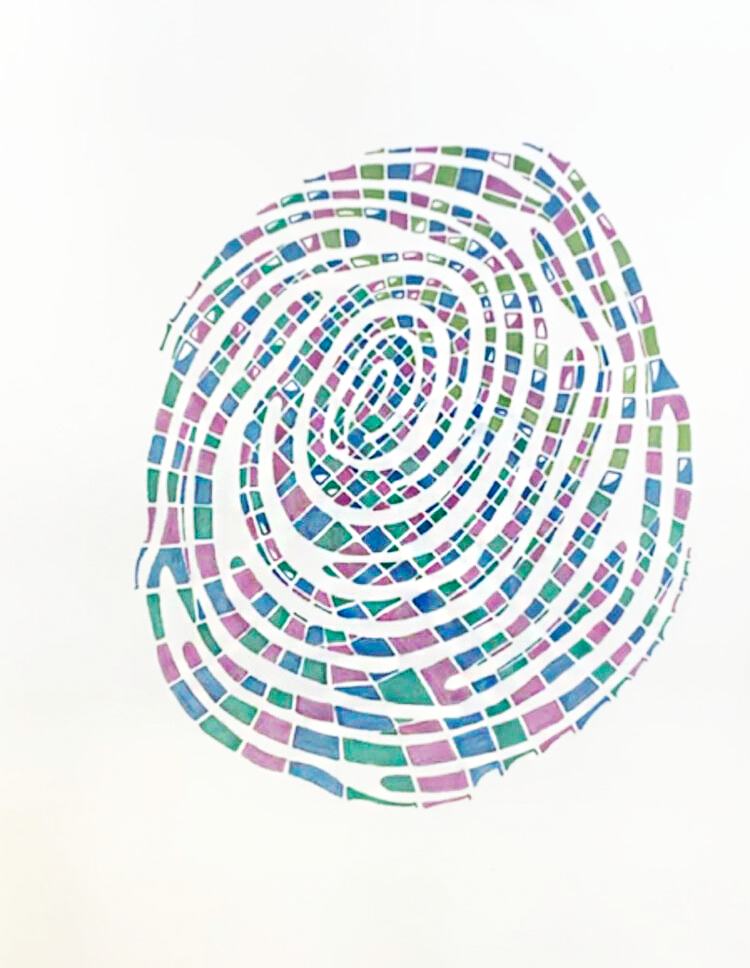
Fingerprint
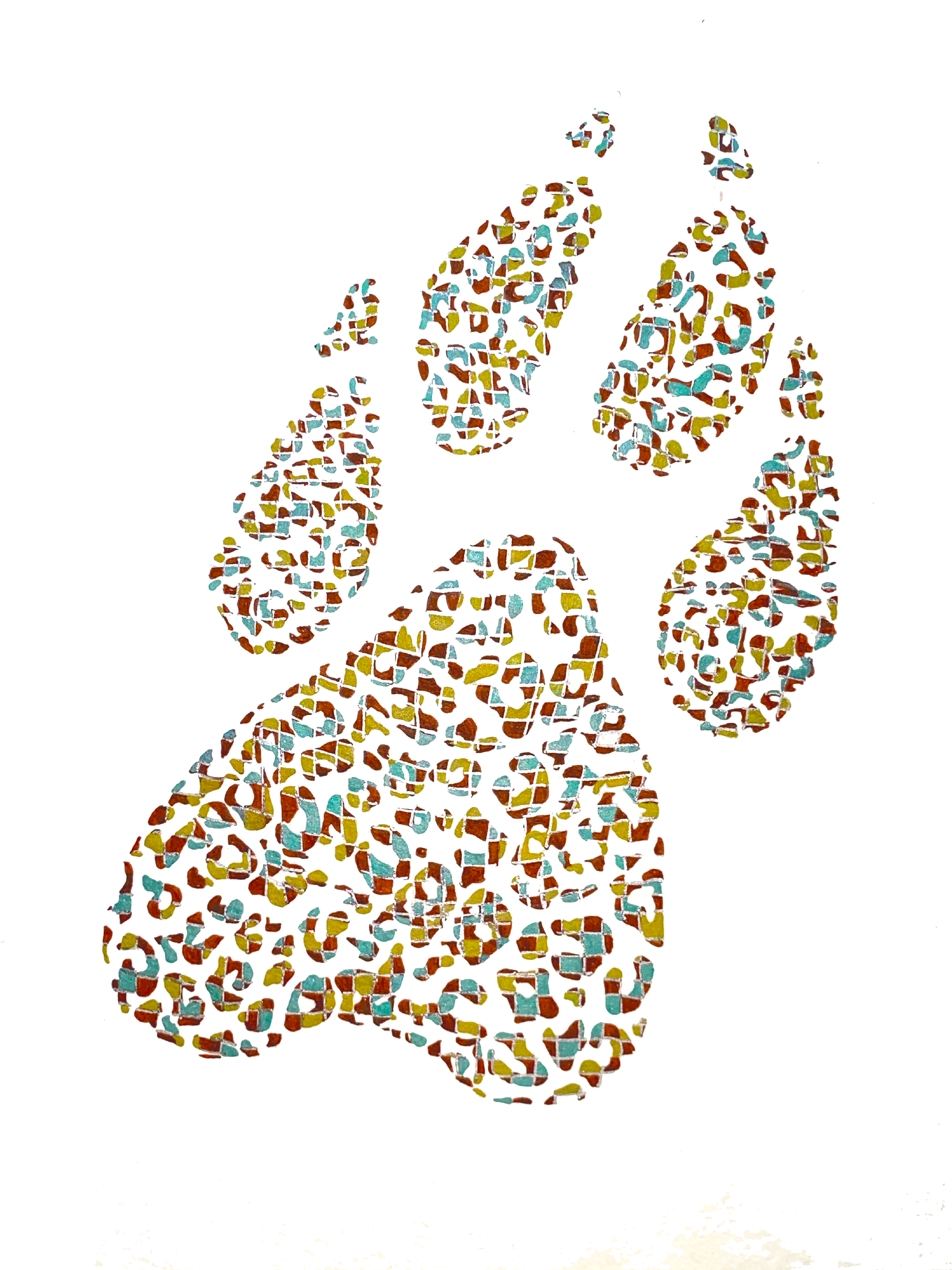
Paw print
How it Began
This 'pixel' series began when in 2019 I stumbled upon Stabilo's metallic felt-tip pens, and instantly fell in love with the ink's unique reflective qualities. Before I knew it, I had filled a page of my sketchbook with alternating color patterns.


Ideation
The initial inspiration for the 'feather' was not related to birds. I had recently attempted to use watercolor paint to fill in a pen outline of a small, leafy blade of grass. While doing this watercolor study, the light illuminating the space between each little green plant cell was an idea I wanted to explore further - but watercolor wasn't the right medium for me to do this.

the watercolor study

picture I took on a Canon DSLR (unrelated to this project, but demonstrates exactly what I was trying to describe!)
Execution Part 1: The 'Feather'
First, I developed a color pattern in a similar manner to my sketchbook page, alternating so that one color would never be directly adjacent to itself, emphasizing the uniqueness of each individual 'cell' that composes and influences the bigger picture. Additionally, I let negative space provide the framework for the pixels to branch off, influenced by how the light shines through leaves (visual example above!).
After completing the right portion of the feather, I switched up the color scheme for the left, using darker colors to give the illusion of shadow/depth (or the feather curling away from the viewer), and maintaining the 'pixel/cell' look without being too disruptive.

process (1/4)

process (2/4)

process (3/4)

process (4/4)

final piece
Part 2: The Fingerprint
Further exploring the idea of interconnectedness via individual cells/'pixels,' my next piece in this series drew inspiration from a general reference of a fingerprint, again using negative space to guide the structure.
What intrigued me was the diverse interpretations this piece evoked. Some people viewed it as a seashell, while others saw it as an inter-dimensional portal, or even something metaphysical related to time (I didn't quite understand that one, but I always welcome and appreciate the various interpretations!).
From my perspective, this piece was influenced by the trillions of complex little cells that compose our own identities, with the fingerprint being a universal symbol of our own tangible metric, unique to each individual that makes up our planet. Like the tiny plant cells of one small leaf, the fingerprint is a micro representation of a much larger, fundamental, and interconnected whole.

fingerprint reference

process

final piece
Part 3: The Paw Print
For the last piece in this series, I employed another grid-like mapping technique to create a composite image of a paw print, with more earth-toned metallic inks. While maintaining the consistent use of negative space to serve as the background and the border, I filled the leopard paw print with the animal's signature spot pattern, again composed of little 'pixels' of color.
One interpretation of the silver disappearing 'grid' connects to endangered animals in captivity, being put in a cage, and natural habitat loss. This exploration became relevant during the brainstorming process of my Endangered Animal Series.

sketch outline/'grid mapping'

process, one color at a time

final piece in direct light
